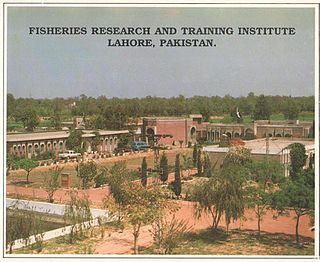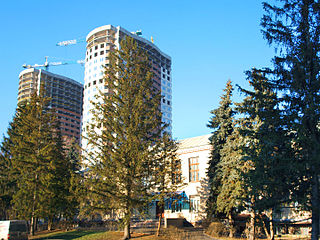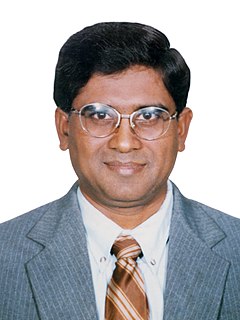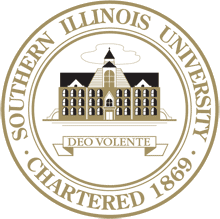
Assam Agricultural University (AAU) is an agricultural education state university which was established in 1969 in Jorhat in the state of Assam, India. The jurisdiction of the University extends to the entire State of Assam with regard to teaching, research and extension education in the field of agriculture and allied sciences. The University has a number of campuses with its headquarters at Borbheta, Jorhat.

St. Albert's College (Autonomous) located at Kochi, India, started in 1946 is an accredited first grade Arts, Science and Commerce College affiliated to Mahatma Gandhi University, Kerala, India with autonomous status conferred by University Grants Commission (UGC), India. It has eighteen degree courses, twelve postgraduate courses and five research centres. The National Assessment and Accreditation Council (NAAC) has accredited the College at the A level with an aggregate score of 3.24. College had completed 3cycles of NAAC accreditation and in last two NAAC accreditation College is accredited at 'A' Grade. The college was founded by late Dr. Joseph Attippetty, the first Indian Archbishop of the Archdiocese of Verapoly. St. Albert's College has been granted autonomous status in 2016 by the NAAC.

The University of Veterinary and Animal Sciences, Lahore (initials:UVAS), is a public university located in Lahore, Punjab, Pakistan. It is accredited by the Pakistan Veterinary Medical Council (PVMC). It has additional teaching campuses in rural areas of the Punjab, Pattoki and Jhang.

The University of the Philippines Visayas is a public research university in the Philippines. A constituent university of the University of the Philippines system, it teaches management, accountancy, marketing, economics, chemistry, applied mathematics and physics, marine science education and research, fisheries, and aquaculture. It offers regional studies programs on the preservation and enrichment of the Visayan cultural heritage.

The Universiti Malaysia Terengganu or UMT, formerly known as Kolej Universiti Sains dan Teknologi Malaysia or KUSTEM, is a university in Kuala Nerus District, Terengganu, Malaysia. It was officially chartered on 1 February 2007.

The Virginia Institute of Marine Science (VIMS) is one of the largest marine research and education centers in the United States. Founded in 1940, VIMS is unique among marine science institutions in its legal mandate to provide research, education, and advisory service to government, citizens, and industry. Funding for VIMS comes from the Commonwealth of Virginia, grants and contracts from federal and state agencies, and private giving. The School of Marine Science (SMS) at VIMS is the graduate school in marine science for the College of William & Mary. Offering both M.S. and Ph.D. degrees in marine science, the school has 57 faculty members, an enrollment of 80-100 students, and includes 4 academic departments. VIMS' main campus is located in Gloucester Point, Virginia.

The UPLB Limnological Research Station traces its root from the Department of Entomology, of the then UP College of Agriculture. Since its conception, the station contributed immensely to the understanding of the bounties of Laguna de Bay and helped establish the duck farming industry on Los Baňos foreshores and pioneered in aquarium fish production in the country. It serves as the base for studies on limnology and biology of aquatic organisms aimed at developing strategies for the optimum utilization and sustained production of aquatic resources; developing, adapting or improving conventional technologies used to increase fish production; and promoting environment friendly approaches for effective water management.

M. J. S. Wijeyaratne is a Sri Lankan academic. He was the Vice-Chancellor of University of Kelaniya and Professor of Zoology.

China, with one-fifth of the world's population, accounts for two-thirds of the world's reported aquaculture production.

Rising ocean temperatures and ocean acidification are radically altering aquatic ecosystems. Climate change is modifying fish distribution and the productivity of marine and freshwater species. This has impacts on the sustainability of fisheries and aquaculture, on the livelihoods of the communities that depend on fisheries, and on the ability of the oceans to capture and store carbon. The effect of sea level rise means that coastal fishing communities are in the front line of climate change, while changing rainfall patterns and water use impact on inland (freshwater) fisheries and aquaculture. The full relationship between fisheries and climate change is difficult to explore due to the context of each fishery and the many pathways that climate change affects.

William Madison Lewis Sr. was a fish biologist who founded the Fisheries and Illinois Aquaculture Center at Southern Illinois University Carbondale. He attended Iowa State University where he obtained M.A. and Ph.D. degrees in zoology specializing in fisheries science. In 1950 he became a professor at Southern Illinois University, where he founded and directed the Southern Illinois University Carbondale Cooperative Fisheries Research Program now called the Fisheries and Illinois Aquaculture Center. His mission for the program was to study the fishes of Illinois and to train graduate students in fisheries science and aquaculture.

The Kerala University of Fisheries and Ocean Studies (KUFOS) is a university established by government of Kerala devoted to studies in fisheries and ocean sciences. The bill seeking to establish the university was passed by the Kerala Legislative Assembly on 30 December 2010. KUFOS has its headquarters in the premises of the College of Fisheries, Panangad, near Madavana junction along the Kochi Bypass. The College of Fisheries, established in 1979, was a constituent college of the Kerala Agricultural University. KUFOS is the first university in India exclusively dedicated to studies in fisheries and allied disciplines. The university was inaugurated and dedicated to the nation in a function held at the campus of the College of Fisheries, Panangad, on 20 February 2011.
St. Andrews Biological Station is a Fisheries and Oceans Canada research centre located on Brandy Cove Road in St. Andrews, New Brunswick.
The Fisheries College and Research Institute (FCRI) is situated in Thoothukudi, Tamil Nadu, India.
The Bachelor of Fisheries Science (B.F.Sc) is a bachelor's degree for studies in fisheries science in India. "Fisheries science" is the academic discipline of managing and understanding fisheries. It is a multidisciplinary science, which draws on the disciplines of aquaculture including breeding, genetics, biotechnology, nutrition, farming, diagnosis of diseases in fishes, other aquatic resources, medical treatment of aquatic animals; fish processing including curing, canning, freezing, value addition, byproducts and waste utilization, quality assurance and certification, fisheries microbiology, fisheries biochemistry; fisheries resource management including biology, anatomy, taxonomy, physiology, population dynamics; fisheries environment including oceanography, limnology, ecology, biodiversity, aquatic pollution; fishing technology including gear and craft engineering, navigation and seamanship, marine engines; fisheries economics and management and fisheries extension. Fisheries science is generally a 4-year course typically taught in a university setting, and can be the focus of an undergraduate, postgraduate or Ph.D. program. Bachelor level fisheries courses (B.F.Sc) were started by the state agricultural universities to make available the much needed technically competent personnel for teaching, research and development and transfer of technology in the field of fisheries science.
The Carl R. Woese Institute for Genomic Biology (IGB) is an interdisciplinary facility for genomics research at the University of Illinois at Urbana-Champaign. The construction of the IGB, which was completed in 2006, represented a strategy to centralize biotechnology research at the University of Illinois. A goal of the IGB is to provide a collaborative environment in which researchers with diverse backgrounds are drawn together by their pursuit of scientific questions related to genomics. The interdisciplinary nature of the institute promotes the creation of innovative solutions to societal challenges related to health, the environment, and food production. Current research at the IGB explores the genomic bases of a wide range of phenomena, including the progression of cancer, the ecological impact of global change, tissue and organ growth, and the diversity of animal behavior.

The Fisheries Research and Training Institute is a research institution in Lahore, Pakistan. with work centring on inland fisheries and aquaculture in Pakistan. Its role is to promote fisheries and aquaculture in the country. The institute is divided in 7 sections: Aquaculture, Biology and Ecology, Nutrition, Pathology and Disease, Chemistry, Fisheries Management, and Training.

The Ukrainian Institute of Fisheries of the National Academy of Agrarian Sciences is the country's main scientific institution that develops promising trends in the field of fisheries research, coordinates and performs methodical management of scientific works in the field of aquaculture and fisheries.

Mudnakudu Channabasappa Nandeesha was a development researcher, innovative aquaculture development worker and educator. He is recognized for making critical contributions to the rapid growth of aquaculture by applying research to key bottlenecks to fish production. In India, he conducted successful pioneering field tests of Ovaprim, an ovulating agent, under different agro-climatic conditions to help remove a critical early barrier for freshwater fish breeding. His significant scientific contributions include simplified breeding technology for cyprinids and development of feeds and feeding techniques appropriate to rural aquaculture, and helping improve and spread the practices of small scale fish farming at a time when most attention was on large scale producers. He wrote a regular and widely acclaimed column in Network of Aquaculture Centers in Asia-Pacific (NACA) "Aquaculture Asia" magazine on farmer innovations in aquaculture. He was described as an "ambassador for aquaculture and was especially noted for promoting aquaculture for the disadvantaged poor households and women. Along with Michael New, in 2003 he was a founding member of the not-for-profit organisation, Aquaculture without Frontiers. While encouraging poor people to take up aquaculture, he was also a pioneer in promoting equity for women, who had been neglected in the aquacuture boom. Throughout his career, he was in the forefront of initiatives to upgrade the professionalism of fisheries and aquaculture experts, and inspired peers and students in critical new directions.


















